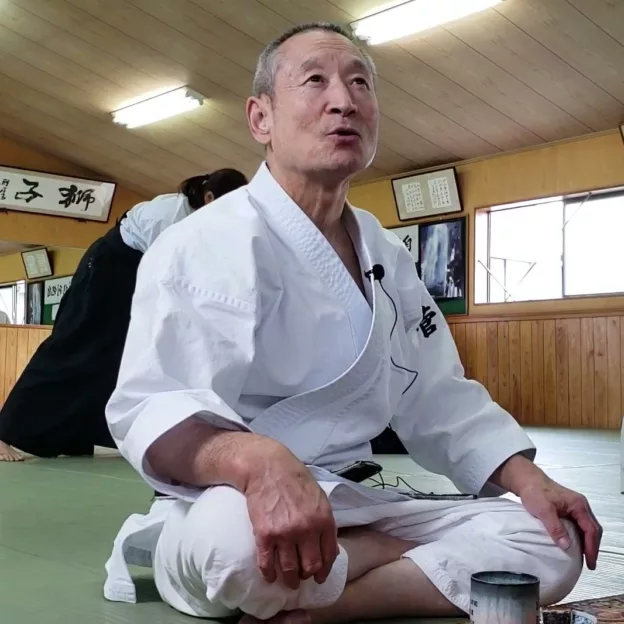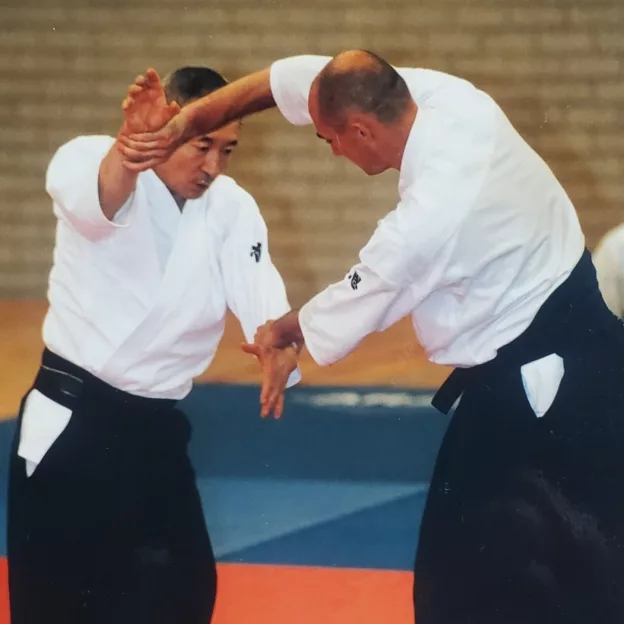While every moment matters, in life and sports, not every moment is equally critical. So, give each moment your undivided attention, but be smart about how you spend it.
Every moment is performative
Ido Portal, an icon in the world of movement training and movement coach of athletes like Connor McGregor, said it eloquently in 2018, during a practice:
“You don’t have to wait until you’re 70, 80, 90 to realize – oh sh#t, I missed the mark. It was all performative moments. And it was a life not well-lived!”
He was referring to the importance of engaging in every practice with the intent and intensity that you would bring to a performance. And by disrespecting the small stage that is given to you on a daily basis, you set yourself up for failure and choking when you enter a bigger stage.
This message is not new. It reminded me of my time in Japan when I was practicing a lot of Aikido. One of my teachers, Suganuma-sensei in Fukuoka, also practiced calligraphy and enjoyed explaining the meaning behind words and characters. One day, during the common after-practice tea with Suganuma-sensei, the word “Shinken” came up.

The first character (真), pronounced shin, means true. The second character (剣), ken, means sword. Originally, it referred to a traditional Japanese sword as it was used by the samurai: a unique artistic expression of a swordsmith but at the same time extremely sharp and unforgiving. Over time, the word came to be used colloquially as “serious” or “sincere”. Suganuma-sensei used it to highlight that even in a practice that is playful and fun you should be as sharp as a live sword (some of us foreigners later joked that even when you have fun, you should be sharp enough to cut through the crap).
Every moment is performative and deserves sharpness. So, practice and play with full intensity. In Japanese, this is called “shinken na asobi”: serious play. To quote Ido Portal once more: “Being playful doesn’t mean you don’t do it full-on serious… till you bleed!”
Not all moments are equally critical
While every moment can be seen as performative in some way, not every moment is critical. Let’s take a look at some examples from sports.
In tennis, you can be distracted and absent-minded for an entire first set and you can still win the match if you get your act together in the second and third sets. So, while all moments are performative, a set point in the first set is not equally critical or consequential as a set point in the second set. Now take the sport of golf: the drive to every hole is nearly equally critical because all points add up equally. Still, if you have a lapse of concentration on a drive, you may be able to compensate for it with a really good approach or putt. In team sports such as basketball or soccer, the spectrum is even wider. You can be completely out of it for a bit of time and it may not matter as much because your teammates are picking up the slack for you. A bit later though, you may have to walk up for a penalty kick or free throw that could decide the entire game. Then take martial arts: any kind of spectrum is almost entirely out the window. With a one-second lapse of judgment, you could be knocked out and wake up in the hospital. Still, you can move and position yourself in certain ways to allow for moments of recovery.

In sports where individual points are played (like in a lot of ball sports), critical moments are often called big points or pressure points. Performing optimally on big points is a theme that comes back in many books on performance optimization and sports psychology. There are different schools of thought on this – some say big points don’t exist or that every point should be seen as a big point. However, we think it is more accurate to view points as either performative or critical. Time to see what can be done to leave the choke behind and become a clutch athlete when it’s critical…
From choke to clutch
Choking in sports is the failure of a person, or persons, to act or behave as anticipated or expected. Commonly, choking refers to pressure situations: the drop in performance in critical moments. Physiologically, choking is simply your brain putting your body in a state that can address existential threats. It’s often called a fight-or-flight response or acute stress reaction and it prioritizes being explosive and emotional, over coordinated and rational. While it’s been useful from an evolutionary perspective, it typically doesn’t help in critical moments in sports. However, three steps can help you use the acute stress reaction to your advantage and go from choke to clutch.
Step 1: reduce the gap
Our brain is a physical organ and it adapts to challenging stimuli with coping mechanisms, just like any other organ. In other words, if you expose yourself repeatedly to acute stress in training situations and the outcome never involves anything dramatic, your brain will learn that a full-blown stress reaction may be overkill. More importantly, any task trained under some level of acute stress will become more stable in real critical moments.
So, if you can turn any practice into a performative practice, the increased intensity will move the needle of acute stress toward critical moments and the physiology of your performative moments starts to get closer to that of critical moments. If you do that often enough, your brain’s natural adaptation response will increase its capacity to be functional at critical moments.
Step 2: manage your tension
Managing your tension is an ability that requires training to develop and maintain. It is one of the five core mental skills in 2Mynds and various tension regulation techniques are covered in our workouts. Before you get to tension regulation though, you must also learn to control your attention and calm your mind. Without attention control, any techniques for relaxation or pumping up your tension will not hit the mark.
In addition to attention control, adopting certain perspectives and cultivating the related positive emotions can make tension regulation a lot easier. For example, reframing the tension and seeing it as excitement for an opportunity is a key perspective (one of the five in 2Mynds) to make sure you don’t increase any borderline functional tension to dysfunctional levels because of negative interpretations. You can read more about this phenomenon in our blog post making sense of being tense.
Another core perspective that can help tremendously with reframing negative thoughts and emotions is a lesson perspective. Whatever the outcome, you’ll learn, and becoming the best learner in the long term is better than a short-term win. This puts outcomes in perspective and even puts discomfort and the feeling of a choke in perspective: what a lesson!
Step 3: play from your strengths
In critical moments, likely, you are a bit more distracted by thoughts or emotions. For most, the extra anxiety leads to more impulsive behavior and for some, it leads to more passiveness and reluctance. Whatever your pattern is, work with it and make sure that however you adjust it fits your strengths, personal, technical, and tactical. So, in critical moments, play first from your strengths and then make life hard on your opponents. Don’t feel pressured to go big and also don’t feel pressured to go conservative – instead, go with your strengths (which means you do have to know what they are…).
Let’s take a few more examples from sports. Tennis player A, who is a solid baseliner tries to hit a second serve ace on breakpoint down. Probably not the best choice. Tennis player B, who is a great serve and volley player but isn’t very solid in long rallies tries to kick his first serve in on breakpoint just to get the rally going. Again, not a great idea. Tennis player C, who is a magician with the ball and has great touch, hits a drop shot on breakpoint. While many parents and coaches might also think that’s a bad idea, in this case, it might be the most natural shot in this play and fully within the player’s strengths.
Summary
Going from choke to clutch in sports requires at least three steps: (1) reduce the gap between performative and critical moments, (2) learn to manage your tension with skills and perspectives, and (3) play from your strengths. In other words, make your practices intense, work on your mental fitness, and focus on your strengths during critical points. All three suggestions are important, but if you take care of the second – your mental fitness – the first and last suggestion will follow naturally. And this is why we created 2Mynds and developed our Flow 255™ platform.
READY TO PUT IT INTO PRACTICE?
Are you ready for a mental fitness approach that uses training principles from exercise physiology to develop your mental skills under functional pressure? Check out our training platform, learning courses, or our pro package that combines everything and even includes a free kick-off consult!
